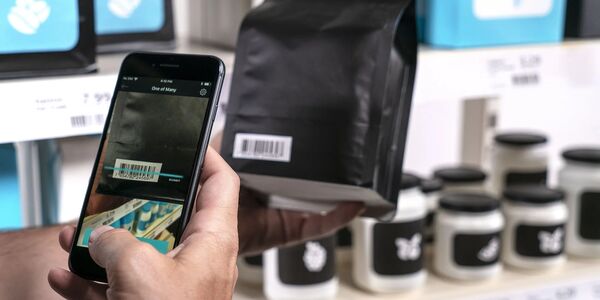March 28, 2024 Industry news
According to nonprofit organization the Global Wellness Institute (GWI), the wellness industry has grown from $3.4 trillion in revenue in 2013 to $5.6 trillion in 2022. By 2027 it is expected to grow by an additional 57 per cent to $8.5 trillion; roughly twice as large as Germany’s gross domestic product.
From boosting fitness and nutrition to improving mental health and sleep, “wellness” is a catch-all term that currently encompasses a great variety of businesses. The GWI defines wellness as “the active pursuit of activities, choices and lifestyles that lead to a state of holistic health.” It also breaks the industry down into several broad categories, the top two of which are largely product based. The largest—personal care and beauty— is valued at $1.08 trillion, closely followed by healthy eating, nutrition and weight loss, at $1.07 trillion.
It is clear that the wellness market represents a massive opportunity for any brand with a focus on health and wellbeing. That is why we recently attended and informative wellness panel discussion at the Start Up Show 2024. Featuring a range of pioneering brands including Hottea Mama, The Good Pea company and MSA skincare, the session was packed with expert tips, valuable insights and practical advice for those looking to break into to this lucrative space. Read on for a summary of our key takeaways.
Finding your niche
Launching any successful business requires careful thought and planning. The wellness category is broad so the panellists all recommended finding “your niche” before getting started. Focus on a specific area you not only understand well, but also have a genuine passion for.

This could be anything from healthy eating to herbal remedies but make sure your purpose and mission is genuine as consumers often seek out brands that have values that align with their own.
Before taking the plunge, take the time to research your target audience, paying close attention to their needs, values and pain points. Analysing any competitors that are already operating within your chosen niche can be incredibly helpful.
Remember that the wellness market is crowded. Focus on what makes your product or service unique, the specific benefits you offer and how you address customer needs.
This approach certainly helped the Good Pea Company who, after painstakingly reviewing their competitors, realised that while the alternative milk market was already fairly saturated, there was still significant room for improvement. This gave them the confidence and motivation to push a head to “offer something better”.
Hottea Mama have benefited massively from using consumer insights and data to guide their decision making while MSA Skincare go to great lengths to understand how their products are used and perceived by their consumers. This shows the importance of developing a real understanding of where your brand and products sit in this space.
Building your brand
Once you have identified your niche and target audience, it is time to build your brand. Start by crafting a compelling identity and personality, ideally supported by a brand story that resonates with your audience’s beliefs and values.
Complement this with memorable brand name, eye catching logo and a brand style that reflects your niche, and you should have a recipe for success.
However, you also need to remember that your brand will only ever be as strong as your weakest products so maintaining the highest possible levels of quality should always be your top-priority.
You need to ensure your offerings are effective, safe and aligned with your brand purpose and values. To do that, you need to find a manufacturer you can trust.
Working with manufacturers
All panellists stressed the importance of finding a trustworthy manufacturer that shares your values. This is especially crucial for those in wellness, an industry where quality and safety are paramount.
If you are just starting out and lack connections or contacts, online B2B directories such as Global Sources can help you find manufacturers suited to your product type. Some marketplaces such as Amazon and Alibaba also offer services that help sellers, suppliers and buyers connect.

If you do go down this route, make sure you carefully research the companies on your shortlist.
Check their websites, social media presence and customer reviews. Look for any certifications relevant to the wellness industry and find out about their quality control procedures. Due diligence is a must!
If you do have industry contacts, seek recommendations from others.
Visiting trade shows or joining online communities could also help to point you in the right direction.
Regardless of how you find your manufacturer, always request samples before committing to a large order. If possible, try and visit their facilities to get a firsthand look at their operations and meet the team behind your product. This may not always be possible, but it does help build trust and manage expectations.
Finding your route to market
Once you have built your brand and chosen your supplier, it is time to identify your best route to market. There are many options to considers, all with their own pros and cons, but the panellists all agreed that it is advisable to focus on one to begin with. Otherwise, you could risk spreading yourself to thin.
Start by defining your ideal customer. Based on your consumer research, determine who you are trying to reach, their demographics and their pain points related to wellness. This will help you tailor your messaging and choose the most effective channels for reaching them.
Equipped with this knowledge, you can they weigh up the benefits and drawbacks of the following options:
- Direct-to-consumer (D2C): selling directly through your own website or app. While this approach gives you full control over branding and customer relations, it requires strong marketing efforts
- Online marketplaces: consider platforms like Amazon or wellness-specific marketplaces to reach a wider audience. Marketplaces can offer a wide reach, export opportunities and increased sales at low cost. However, you may find that you have less brand control and will likely face stiff competition
- Retail partnerships: partner with brick-and-mortar stores that align with your brand and target audience. Securing a listing can be hard but will significantly increase your reach, brand awareness and consumer trust



